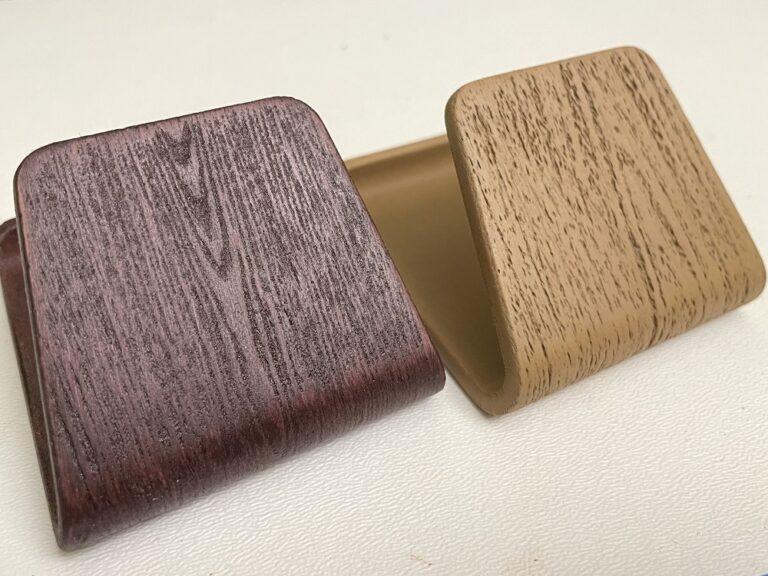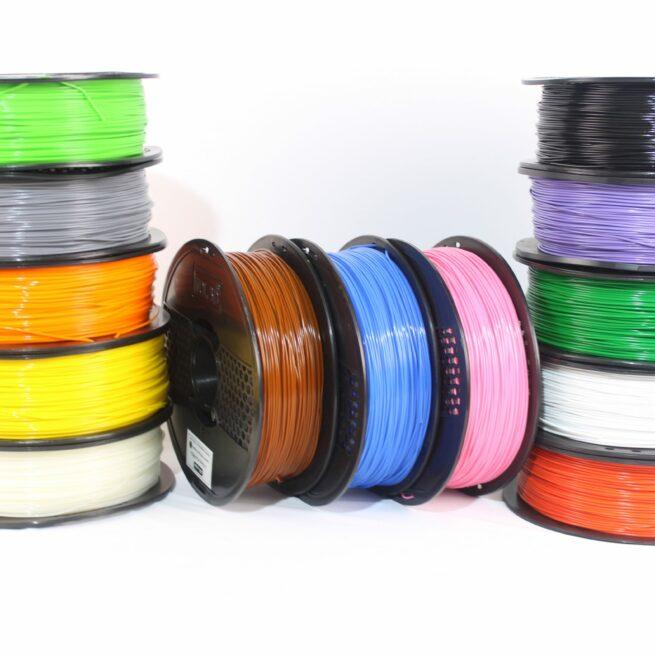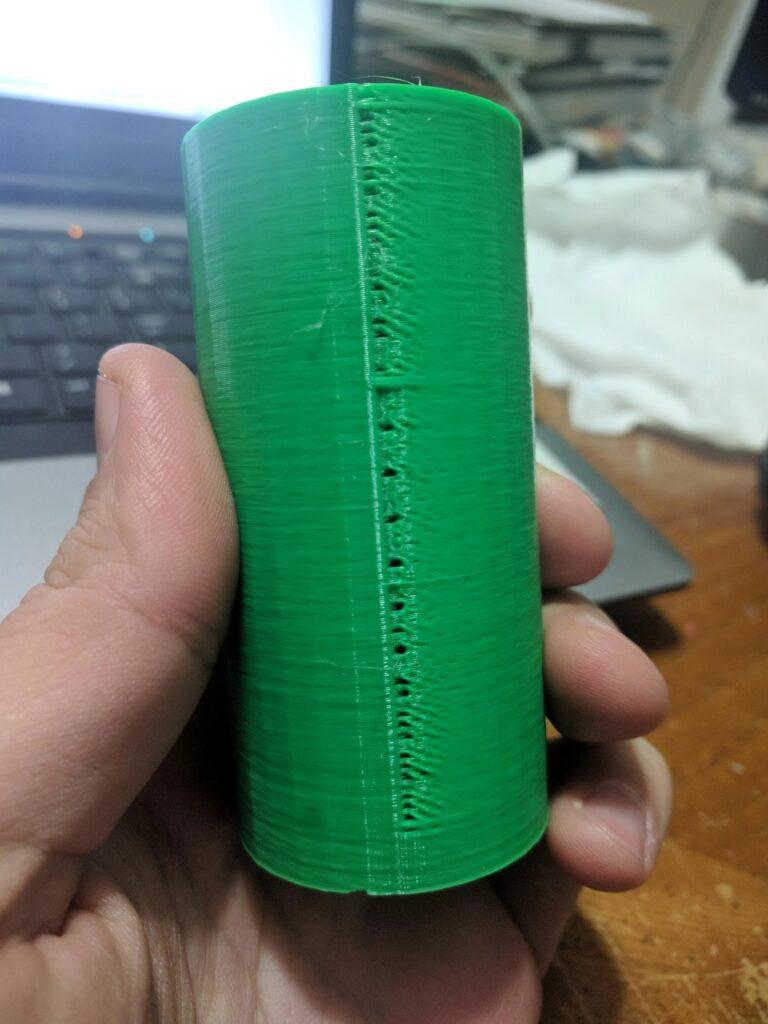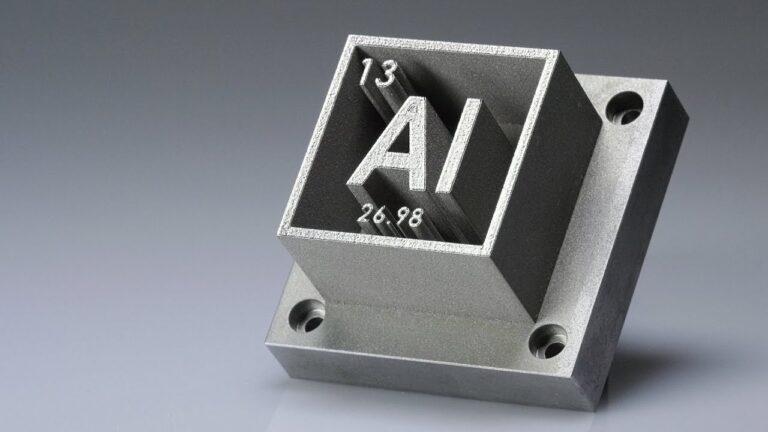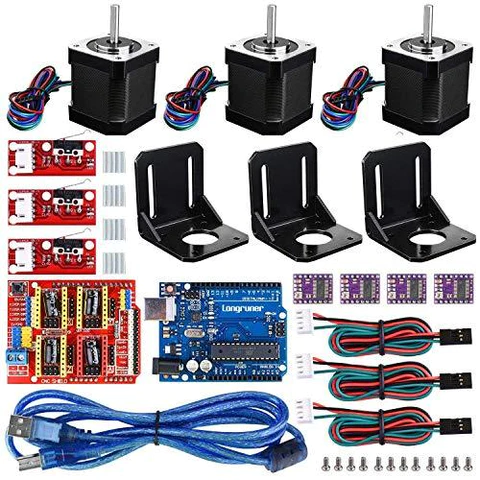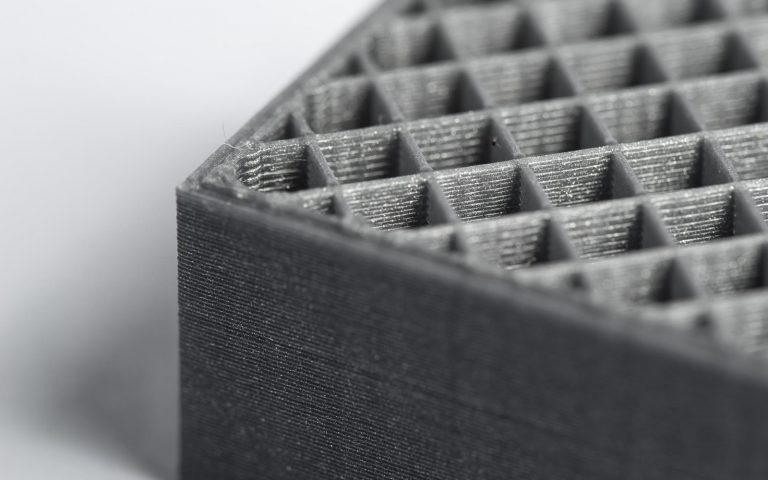Discover the World of Mini 3D Printers: Small but Mighty
Introduction
Since these little machines have made 3D printing more accessible to a wider audience, the market for micro 3D printers has been growing quickly. Indeed, people can materialize their ideas more readily than ever thanks to these compact yet useful technologies. Mini 3D printers are quickly becoming a necessary tool for both enthusiasts and professionals due to the rising demand for customized products and original designs.
In this article, we’ll examine the multiple advantages of using tiny 3D printers and look at some of the diverse industries in which they can be used. Additionally, we’ll look at some of the best models available and provide details on their features and capabilities. You’ll have a better grasp of how these portable 3D printing options can help you unleash your creativity and realize your projects by the time this article is up.
Let’s start by taking a closer look at some of the major characteristics that make tiny 3D printers such a desirable option for a wide range of consumers.
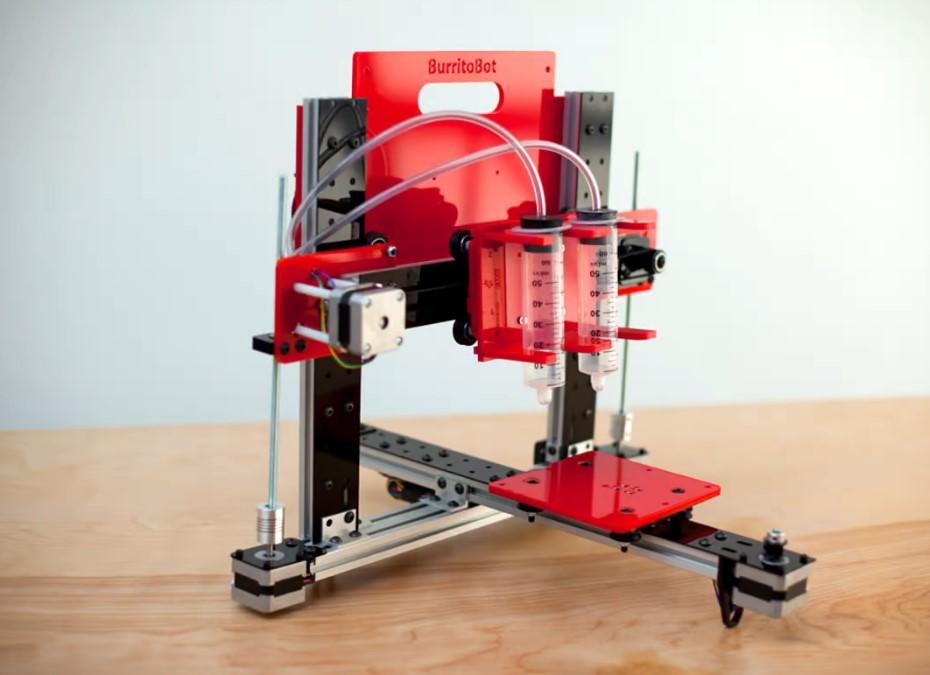
The growing popularity of 3D printing
Undoubtedly, the rising use of 3D printing has transformed several sectors, from industry and healthcare to art and design. This innovative technology offers unmatched precision and personalization by enabling users to build three-dimensional items layer by layer. The demand for mini 3D printers is increasing due to technology being more accessible and affordable. They are suitable for small spaces and have lower prices. This allows both professionals and enthusiasts to have access to 3D printing. The mini 3D printer’s versatility and user-friendly features have also attracted a new generation of creative makers.
The emergence of mini 3D printers
In the field of additive manufacturing, the appearance of small 3D printers has completely changed the game. With the help of these small gadgets, 3D printing has become more convenient and available to a wider range of professionals, educators, and enthusiasts. Miniature 3D printers have effectively met the demand for a more transportable and affordable solution without sacrificing effectiveness and quality. In addition, it is now simpler for newbies to get started because to their user-friendly interfaces and expanding network of support. As a result, the tiny 3D printer market keeps growing and seeing the introduction of new models and innovations, which furthers the development and acceptance of this incredible technology.
The benefits of compact 3D printing solutions
Compact 3D printing technologies, such as tiny 3D printers, have a wide range of advantages. First off, their compact size makes them ideal for those with little available room or those who need portability. Mini 3D printers are affordable for newcomers and budget-conscious hobbyists. They offer outstanding precision and quality. Tiny 3D printers are adaptable and work with many materials and applications. The expanding community of users and resources makes it easy to get assistance and ideas for projects. The popularity of mini 3D printers opens the door to endless creative possibilities.
Key Features of Mini 3D Printers
Compact 3D printing technologies, such as tiny 3D printers, have a wide range of advantages. First off, their compact size makes them ideal for those with little available room or those who need portability. Mini 3D printers are affordable and perfect for beginners and budget-conscious hobbyists. Despite their small size, they offer excellent precision and quality. They can also work with different materials and applications, allowing for endless creative possibilities. With a growing user community and resources, getting help and ideas for projects is now easier than ever.
Portability and ease of use
One of the most appealing features of mini 3D printers is their portability and ease of use. With their compact design, these devices can easily fit on a desk or be transported to different locations as needed. This portability offers users the flexibility to work on their projects wherever inspiration strikes. Mini 3D printers have user-friendly interfaces and straightforward setup processes. They are accessible even to those new to 3D printing. This ease of use encourages experimentation and creativity. It enables users to harness their printer’s potential. They won’t feel overwhelmed by complex procedures.
Affordability
Mini 3D printers are frequently more affordable than their larger counterparts, which is another important benefit. Mini 3D printers are popular with newcomers, enthusiasts, and budget-conscious users. They allow exploring 3D printing without high expenses and risks of commitment. Reduced initial expenditure makes them accessible to more people. Mini 3D printers democratize technology and enable a wider spectrum of people to participate. These printers help people realize their ideas by investigating the possibilities of 3D printing.
Wide range of materials and applications
The versatility of mini 3D printers extends to their ability to work with a wide range of materials and applications. Despite their compact size, these devices often support various materials, such as PLA, ABS, and even flexible filaments like TPU. This flexibility opens up a plethora of creative possibilities for users, from creating intricate sculptures and functional prototypes to crafting custom accessories and educational models. Moreover, the applications of mini 3D printers are not limited to specific industries, as they can cater to the needs of artists, designers, engineers, educators, and hobbyists alike. In short, the versatility of mini 3D printers offers a world of opportunity for users to explore, innovate, and create.
High precision and detail
An essential aspect of mini 3D printers is their ability to deliver high precision and detail in the objects they produce. Despite their small size, many of these devices boast impressive resolution and layer thickness capabilities, ensuring that even the most intricate designs are accurately reproduced. This level of precision is particularly valuable for applications that require fine details, such as jewelry making, scale modeling, or prototyping for product development. Furthermore, advances in 3D printing technology continue to improve the accuracy and performance of mini 3D printers, making them a competitive option for users who demand both quality and convenience in a compact package.
Top Mini 3D Printers on the Market
As the demand for mini 3D printers grows, numerous models have emerged on the market, each with its own set of unique features and capabilities. Among the top contenders, a few stand out for their impressive performance, user-friendly design, and reliability. Some of these popular mini 3D printer models include the Monoprice Select Mini V2, Flashforge Adventurer 3 Lite, Prusa Mini+, Monoprice Cadet, and the Creality Ender 2 Pro. In addition to their affordability, these devices consistently receive high praise for their print quality, ease of use, and versatility, catering to a broad range of applications and skill levels. Therefore, when choosing a mini 3D printer, it’s essential to research and compare these top models to find the perfect fit for your needs and goals.
A brief overview of top models
Monoprice Select Mini V2 (Best Choice)
The Monoprice Select Mini V2 is an affordable and high-quality mini 3D printer that builds upon its predecessor, the Select Mini. With a heated printer bed and special BuildTak Mat, this printer offers improved adhesion and prevents warping. Although its print bed temperature is not ideal for ABS prints, it still provides impressive accuracy and a sturdy all-metal body. Its 55mm/sec print speed may not be the fastest, but the Mini V2 has a supportive community to help users along their 3D printing journey.
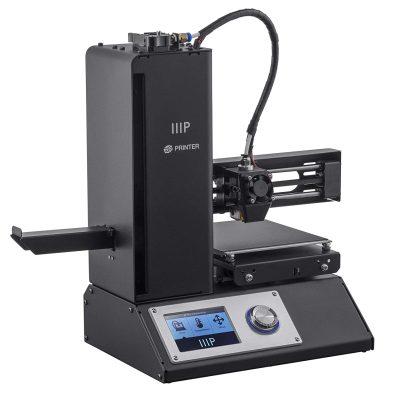

Flashforge Adventurer 3 Lite (Best Value)
Designed for beginners, the Flashforge Adventurer 3 Lite is a user-friendly and enclosed 3D printer, making it safe for children and maintaining consistent temperatures for better printing. While it lacks a camera, it still provides great print quality with minimal stringing. It is compatible with ABS and has a simple touchscreen UI. However, some users have reported issues with noise and customer service.
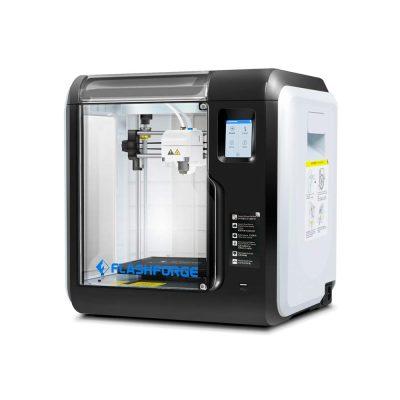

Prusa Mini+ (Premium Choice)
The Prusa Mini+ is a premium small 3D printer with excellent print quality and an intuitive interface. It handles a variety of filaments and has a sleek, compact design. Despite being a bit noisy, it is a popular choice for classrooms and laboratories. The printer requires assembly, but the process is rewarding with clear instructions provided.
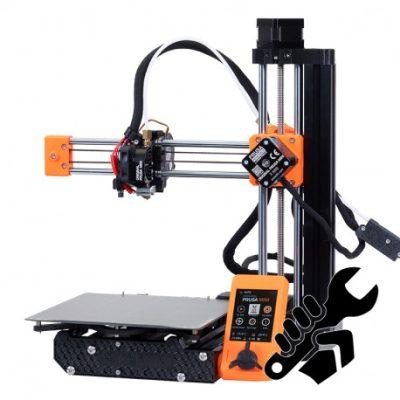

Monoprice Cadet (Best Introductory Printer)
The Monoprice Cadet is an affordable and easy-to-use introductory 3D printer with decent print quality. It supports PLA only and cannot hold a full-size filament spool. Despite a poor control app, it is a good option for first-time 3D printer users who have limited space.
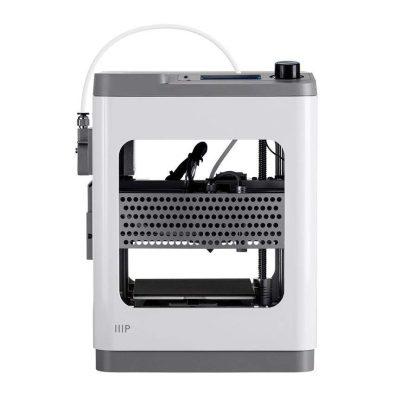

Creality Ender 2 Pro
The Creality Ender 2 Pro is an easy-to-assemble 3D printer with great print quality, a heated print bed, and compatibility with PLA, TPU, and wood composites. Its basic model is suitable for beginners, but it can also be customized for more advanced users. While it has a small online community and can be noisy, the Ender 2 Pro is a solid option for those looking to upgrade from their first 3D printer.
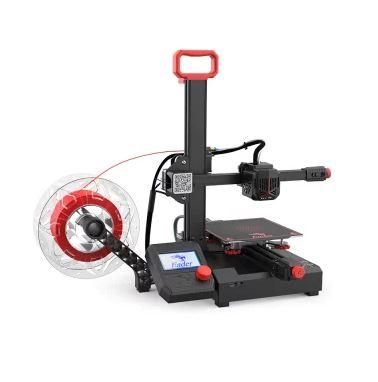

Comparison of features and specifications
| Model | Printer Type | Materials | Build Volume | Print Resolution | Maximum Print Speed | Notable Features |
|---|---|---|---|---|---|---|
| Monoprice Select Mini V2 | FFF | PLA, ABS, TPU, TPE, TPC & PETG | 120 x 120 x 120 mm | 100-300 microns | 55 mm/s | Heated print bed, BuildTak Mat, all-metal body |
| Flashforge Adventurer 3 Lite | FDM | PLA, ABS, Metal & Wood | 150 x 150 x 150 mm | 100-400 microns | 100 mm/s | Enclosed design, touchscreen UI |
| Prusa Mini+ | FDM | PLA, PETG, ASA, ABS, Polycarbonate, CPE, PVA/BVOH, PVB, HIPS, Polypropylene, Flex, nGen, Nylon & Woodfill | 180 x 180 x 180 mm | 50 microns | 200 mm/s | Intuitive interface, handles various filaments, compact design |
| Monoprice Cadet | FDM | PLA Only | 100 x 105 x 100 mm | 100-500 microns | 150 mm/s | Automatic leveling, Wi-Fi connectivity |
| Creality Ender 2 Pro | FDM | PLA, TPU & Wood | 165 x 165 x 180 mm | N/A | 100 mm/s | Heated print bed, simple calibration, quick setup |
Pros and cons of each model
| Model | Pros | Cons |
|---|---|---|
| Monoprice Select Mini V2 | – Affordable – Amazing print quality | – Average print speed – Has issues printing ABS |
| Flashforge Adventurer 3 Lite | – Enclosed space keeps children safe – Simple to use – Prints ABS well | – Printer can be loud |
| Prusa Mini+ | – Excellent print quality – Intuitive interface – Handles a variety of filaments – Looks sleek and compact | – Noisy |
| Monoprice Cadet | – Affordable – Ready to go out of the box – Decent print quality | – Supports PLA only – Can’t hold a full-size filament spool – Poor control app |
| Creality Ender 2 Pro | – Great print quality – Easy setup and usability – Customizable | – Noisy – Users will outgrow the machine |
Popular Applications of Mini 3D Printers
With their numerous uses, mini 3D printers have transformed numerous sectors. With the help of these small machines, both experts and enthusiasts can realize their ideas, from prototyping to manufacturing detailed patterns. Additionally, tiny 3D printers are frequently utilized in education to give students a hands-on way to learn design and engineering principles. They make it possible to create specialized anatomical models and prosthetics for use in research and training in the medical industry. Last but not least, they’ve made their way into the field of art, letting creators create incredibly detailed sculptures and complex jewelry designs. Overall, the multitude of uses for tiny 3D printers is constantly expanding, providing infinite chances for invention and creativity.
Education and STEAM learning
Mini 3D printers are already commonplace in school, especially when it comes to fostering STEAM (Science, Technology, Engineering, Arts, and Mathematics) education. These portable tools promote hands-on learning and allow students to envision and comprehend difficult ideas by building tangible models. Additionally, tiny 3D printers give teachers the ability to create dynamic, engaging classes that promote creativity, problem-solving, and critical thinking abilities. Students are consequently more prepared to face difficulties in diverse businesses in the real world. Mini 3D printers are also available to a variety of educational institutions due to their low cost and user-friendly design, democratizing access to cutting-edge technology, and improving learning opportunities all around the world.
Rapid prototyping for small businesses
Rapid prototyping for small firms has been transformed by the introduction of mini 3D printers, which provide an effective and economical way to produce product designs and prototypes. First off, by allowing business owners to immediately test and refine their ideas, these little gadgets drastically shorten the time it takes to launch a product. Furthermore, tiny 3D printers offer affordable options that let companies avoid high outsourcing costs and reduce the costs involved in developing new products. As a result, small enterprises are now better able to compete with larger corporations, encouraging innovation and promoting expansion across numerous industries. Mini 3D printers are also a priceless asset for companies wanting to stay ahead of the competition and meet constantly shifting consumer needs because of their simplicity of use and adaptability.
Home-based makers and hobbyists
Home-based makers and hobbyists have found a valuable ally in mini 3D printers, which facilitate the creation of intricate designs and customized objects. Initially, the affordability and compact nature of these printers have made them accessible to a wider audience, inspiring creativity and empowering individuals to bring their ideas to life. Moreover, mini 3D printers allow hobbyists to experiment with a diverse range of materials, broadening their skill sets and fueling their passion for innovation. Consequently, online communities have flourished, with enthusiasts sharing tips, projects, and support, further promoting the growth and development of this exciting hobby. Ultimately, mini 3D printers have transformed the way home-based makers approach their craft, unleashing a new wave of creativity and collaboration across the globe.
Customizable gifts and trinkets
Mini 3D printers have revolutionized the world of customizable gifts and trinkets, providing a platform for creative expression and personalization. Firstly, these compact devices enable individuals to design and print bespoke items, ranging from jewelry to ornaments, adding a special touch to any occasion. Additionally, with the wide variety of materials available for use, mini 3D printers offer versatility, allowing for an array of textures and colors to match the recipient’s preferences. Furthermore, the ease of use and affordability of these machines encourage experimentation and innovation, spurring the creation of unique, thoughtful gifts. In conclusion, mini 3D printers have transformed the gifting landscape, fostering a more meaningful connection between the giver and the recipient through customized, handcrafted presents.
Tips for Getting Started with Mini 3D Printers
It can be exciting to start your journey with a tiny 3D printer, but it’s important to keep some advice in mind for a successful launch. To ensure compatibility with your preferred materials and projects, first, become familiar with the printer’s specifications. Spend some time understanding the supplementary software, which will expedite the production of designs and enhance your entire experience. To ensure safety and maintain ideal printing conditions, set up a dedicated, well-ventilated workstation for your tiny 3D printer. To further your understanding and solve any potential problems, look for internet resources like forums and tutorials. Last but not least, practice and persistence are necessary to learn the art of 3D printing, so be patient and give yourself time to try. You’ll be well-equipped to maximize your experience with your tiny 3D printer by adhering to these recommendations.
Choosing the right printer for your needs
Selecting the ideal mini 3D printer for your specific needs can be a daunting task, given the multitude of options available. To begin with, assess your primary goals and requirements, such as desired materials, print resolution, and build volume. Next, consider factors such as ease of use, available features, and potential for future upgrades. Additionally, take into account the printer’s compatibility with various slicing software and file formats, ensuring a seamless workflow. Furthermore, research the manufacturer’s reputation for quality and customer support, as well as the printer’s online community for troubleshooting assistance. Finally, establish a budget that balances your desired features with affordability. By carefully evaluating these aspects, you’ll be well-equipped to make an informed decision and choose the perfect mini 3D printer to suit your unique needs.
Understanding the basics of 3D printing software
Understanding the foundations of 3D printing software is crucial for maximizing the potential of a tiny 3D printer. Learn about CAD (Computer-Aided Design) systems, which let you make and edit 3D models, first. Learn about slicing software next, which turns your 3D model into a set of directions (G-code) that your printer can adhere to. Explore other file formats, such as STL, OBJ, and 3MF, to see which is compatible with the software and printer of your choice. Keep in mind that settings like infill density, layer height, and print speed can have a big impact on the quality of the printed object. Finally, don’t be afraid to experiment with different software settings and parameters because doing so will help you optimize the performance of your tiny 3D printer.
Maintenance and troubleshooting
Proper maintenance and troubleshooting are crucial for the longevity and performance of your mini 3D printer. To begin with, regularly clean the print bed and nozzle to prevent clogging and ensure optimal adhesion. Additionally, lubricate the moving parts, such as rods and bearings, to reduce friction and wear. Furthermore, ensure that the belts remain tight and properly aligned, as this affects print accuracy. In case of issues, consult the printer’s manual, online forums, or manufacturer support for guidance. Importantly, familiarize yourself with common 3D printing problems, such as warping, stringing, and layer separation, to quickly identify and address them. By staying proactive with maintenance and developing troubleshooting skills, you can maximize your mini 3D printer’s performance and extend its lifespan.
Exploring online resources and communities
Exploring internet sources and communities can broaden your experience and knowledge as a tiny 3D printer enthusiast. First, join discussion groups on Facebook and Reddit to meet like-minded people, exchange ideas, and get advice. Follow sites and YouTube channels that provide project ideas, product reviews, and lessons. Visit websites like Thingiverse and MyMiniFactory for a wide variety of 3D models that you can print or modify. Importantly, the 3D printing community is welcoming and happy to assist, so don’t be shy about asking questions or contributing to debates. You may improve your knowledge of new methods and materials, broaden your skill set, and keep up with the most recent advancements in the field of tiny 3D printers by actively participating in these online networks.
The Future of Compact 3D Printing
The future of compact 3D printing appears promising as mini 3D printers continue to evolve and innovate. These devices will likely become more user-friendly, enabling individuals with varying skill levels to participate in 3D printing effortlessly. Furthermore, advancements in materials and printing techniques are expected to increase the versatility and practicality of mini 3D printers. As the technology becomes more affordable, compact 3D printers may even become commonplace in households, schools, and small businesses. Additionally, the integration of artificial intelligence and machine learning may lead to smarter, self-optimizing printers that can adapt to user needs and preferences. Overall, the potential for mini 3D printers seems limitless, and their growing popularity and capabilities will undoubtedly shape the landscape of the 3D printing industry.
Technological advancements and innovations
The tiny 3D printer market is expanding at an exponential rate because of technological improvements and advancements. As a result, these small gadgets are becoming more widely available, effective, and adaptable. Additionally, improvements in printing quality and velocity support their expanding user base. The uses and opportunities for tiny 3D printers are also expanding as a result of developments in software and materials. For instance, advancements in eco-friendly materials and bioprinting are revolutionizing the sector and creating new possibilities for innovative, ethical, and sustainable uses. Therefore, as technology develops, tiny 3D printers will become more capable and productive, solidifying their position as essential equipment across a range of industries.
Sustainable materials and eco-friendly practices
The mini 3D printer industry is increasingly embracing sustainable materials and eco-friendly practices to minimize its environmental footprint. For instance, the development of biodegradable and recycled filaments has gained momentum, reducing waste and promoting responsible use. Furthermore, energy-efficient printers are becoming more prevalent, contributing to reduced power consumption. Additionally, the community is focusing on creating reusable designs that minimize material usage, and support repair or upcycling. As awareness grows, more manufacturers and users are adopting green practices in their 3D printing endeavors. Consequently, this shift toward sustainability will shape the future of mini 3D printing, ensuring its positive impact on both the environment and society.
The expanding role of mini 3D printers in various industries
Mini 3D printers are increasingly becoming integral in various industries, thanks to their versatility, affordability, and ease of use. For example, in the medical field, these compact devices facilitate the creation of patient-specific models and prosthetics. Similarly, in the fashion industry, designers are using mini 3D printers to develop intricate patterns and unique accessories. Moreover, the automotive and aerospace sectors are also benefiting from rapid prototyping and part customization using these compact printers. Furthermore, the construction industry is exploring the potential of mini 3D printers for creating detailed architectural models. Consequently, the expanding role of mini 3D printers across diverse sectors highlights their growing importance and potential for widespread adoption in the coming years.
Conclusion
In conclusion, tiny 3D printers are more widely available and reasonably priced, enabling more people and companies to investigate the potential of 3D printing. These small devices can in handy for a variety of tasks, including home hobbies, quick prototyping, and education. It’s important to take into account aspects like selecting the best printer, comprehending software, and maintenance when starting started with a tiny 3D printer. Additionally, with improvements in technology and materials making the process more environmentally friendly and sustainable, the future of small 3D printing appears bright. It’s thrilling to see the cutting-edge applications that will surface in the future as these printers continue to expand their position across a variety of industries.
Recap of the benefits and possibilities of mini 3D printers
In conclusion, tiny 3D printers offer a wide range of advantages and possibilities. They can be utilized in education and STEAM learning, rapid prototyping for small enterprises, home-based makers and hobbyists, personalized presents and trinkets, and much more. It’s critical to select the best printer for your purposes, comprehend the fundamentals of 3D printing software, and maintain and repair your printer as needed. For additional information and support, there are a ton of online resources and groups available. Looking ahead, tiny 3D printers will continue to grow in importance across numerous industries as new technology developments and improvements open up new opportunities. Furthermore, using eco-friendly procedures and sustainable materials will be more crucial in the years to come. Mini 3D printers are a vital tool for both individuals and businesses because they provide limitless opportunities for creativity, innovation, and problem-solving.
Encouragement to explore and experiment with compact 3D printing solutions
To sum up, micro 3D printers have created new opportunities for entrepreneurs, small enterprises, and industries to experiment and develop. These printers have developed into an affordable option for anyone wishing to realize their ideas thanks to the advantages of customization, quick prototyping, and cost efficiency. The potential uses for a tiny 3D printer expand along with technological advancement. To ensure responsible and ethical usage of these printers, it is essential to stay current with the most recent trends and developments in the industry, such as eco-friendly methods and sustainable materials. Therefore, it is exciting to investigate and test out these small-scale 3D printing options, as they may result in ground-breaking discoveries and limitless creative possibilities.
How to Get Started with Mini 3D Printers?
- Research and Choose a Mini 3D Printer
Research and Choose a Mini 3D Printer – Determine your needs and budget, research available options, and choose the right printer for you.
- Install 3D Printing Software
Download and install the appropriate 3D printing software for your chosen printer.
- Familiarize Yourself with the Printer
Learn the basics of operating and maintaining your mini 3D printer.
- Create or Find a 3D Model
Choose a pre-made 3D model or design your own using 3D modeling software.
- Prepare the 3D Model
Use 3D printing software to prepare your model for printing, adjusting settings as necessary.
- Start Printing
Load your printer with the appropriate materials and start the printing process.
- Monitor the Print
Keep an eye on the printer during the printing process to ensure everything is running smoothly.
- Post-Printing Cleanup
Once the printing is finished, clean and finish the printed object as necessary.
- Troubleshoot and Maintain the Printer
Regularly troubleshoot and maintain your mini 3D printer to keep it in good working order.
- Share and Collaborate
Share your creations and collaborate with other 3D printing enthusiasts online through forums and communities.
FAQs
Mini 3D printers can use a variety of materials including PLA, ABS, PETG, nylon, and even some metals like aluminum and bronze.
The time it takes to print an object with a mini 3D printer depends on the size, complexity, and resolution of the object. A small and simple object may take only a few minutes, while a larger and more complex object may take several hours.
While there may be a learning curve when starting out with a mini 3D printer, there are many resources available online, including tutorials, forums, and videos, to help you get started. With some patience and practice, it can be easy to learn how to use a mini 3D printer.
Yes, mini 3D printers can be used for commercial purposes. Many small businesses use them for rapid prototyping and creating small batches of products.

